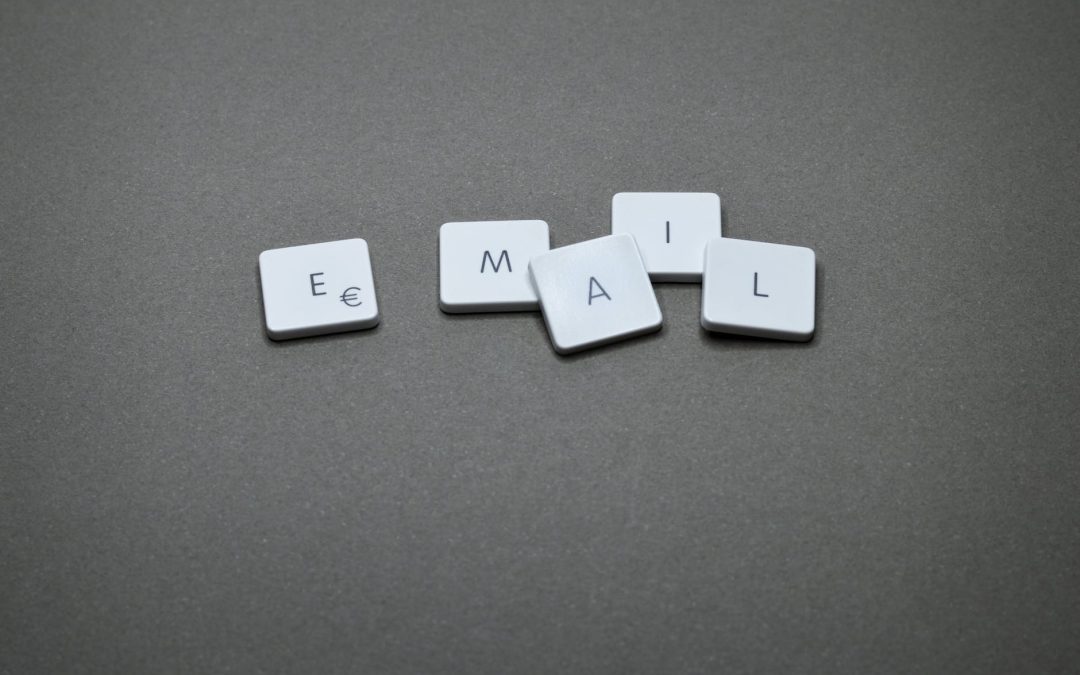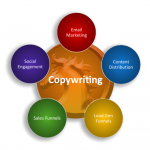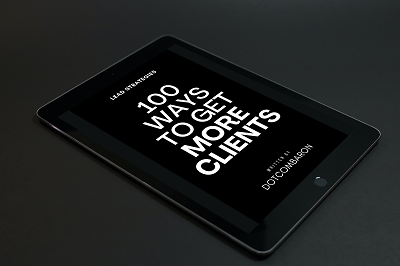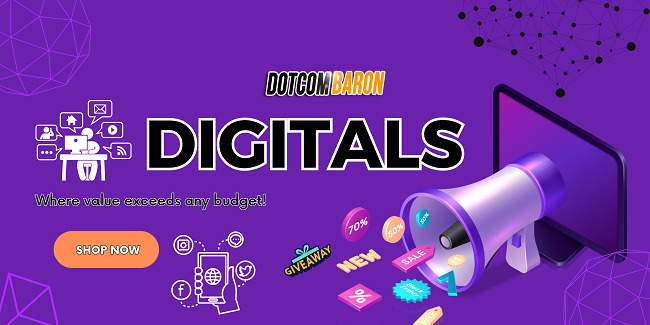Unlock Explosive Business Growth with Our Game-Changing Cold Emailing Strategies!
What Is Cold Emailing?
Cold emailing is a technique often used in the business world to connect with people you haven’t met or interacted with before.
Think of it as writing a friendly and professional letter to someone new, introducing yourself and discussing common interests or goals.
In a similar manner, cold emailing involves sending a well-crafted message to a potential contact, aiming to start a conversation about your product or service. It’s comparable to making a phone call to a stranger, but instead, you’re using email to communicate.
The primary objective of cold emailing is to build a relationship with the recipient, so you can collaborate, learn from each other, and potentially expand your business opportunities.
As a cold email expert, my role is to help individuals create engaging, courteous, and effective emails, making it easier for them to connect with new contacts and grow their businesses.
The Hurdles of Cold Emailing: The Art of Effective Outreach
- Poor targeting: Newbies often send emails to recipients who are not relevant to their products or services. For example, promoting a vegan food product to a business selling meat products would be ineffective.
- Weak subject lines: Crafting a compelling subject line is crucial, as it determines whether the email gets opened. Newbies may struggle with writing engaging subject lines, causing their emails to be ignored or deleted.
- Lack of personalization: Sending generic emails without addressing the recipient’s name or specific interests is a common pitfall. For instance, addressing an email with “Dear Sir/Madam” instead of the recipient’s name can make the email seem impersonal and less likely to elicit a response.
- Overly promotional content: Newbies sometimes focus too much on selling their product or service rather than providing value to the recipient. An email that only talks about the benefits of a product without considering the recipient’s needs may be perceived as spam.
- Lengthy emails: A common mistake is writing excessively long emails that overwhelm the recipient. For example, an email containing several paragraphs detailing every feature of a product might discourage recipients from reading it entirely.
- Inadequate follow-ups: Not following up with potential leads can result in missed opportunities. Newbies might send just one email and fail to continue the conversation, causing the recipient to lose interest or forget about their offer.
- Improper timing: Sending emails at inopportune times can reduce open and response rates. For instance, an email sent late at night might be buried beneath other emails by the time the recipient checks their inbox.
- Neglecting analytics: Ignoring data on email performance, such as open and click rates, can hinder the improvement of future campaigns. Newbies may not track their email performance, making it difficult to identify and address areas needing improvement.
- Inadequate spam filter awareness: Unfamiliarity with email providers’ spam filters can lead to emails being marked as spam. For example, using excessive capitalization or exclamation marks in the subject line might trigger spam filters.
- Non-compliance with regulations: Failing to comply with laws governing email marketing, such as including an unsubscribe link or obtaining consent before sending emails, can lead to penalties. Newbies might be unaware of these regulations, putting their businesses at risk.
The Basics of Our Cold Email Outreaches:
- A/B Split Testing: Experiment with various email elements, such as subject lines or body content, to determine the most effective approach. For example, test two different subject lines to see which one generates higher open rates.
- Advanced Spintax: Craft unique emails by providing multiple variations for every 3-6 words, preventing messages from landing in spam folders. For instance, alternate between “Hello” and “Hi” for greeting recipients.
- Dynamic Placeholders: Personalize emails by inserting placeholders for names, addresses, cities, and more, ensuring each message is tailored to the recipient. For example, use “{FirstName}” to automatically include the recipient’s first name.
- Smart Unsubscribe Links & Signatures: Embed unsubscribe links and email signatures using placeholders instead of static text, maintaining a professional appearance. For instance, use “{CompanyName}” in the signature to automatically display your business name.
- Comprehensive Reporting: Receive detailed reports on email metrics such as opens, deliveries, and clicks, enabling informed decision-making. For example, track the percentage of recipients who clicked on your call-to-action link.
- Complete Email Sequences: Implement full email sequences with an unlimited number of follow-up messages, nurturing leads over time. For instance, send a series of three emails spaced a week apart to maintain engagement.
- Behavior-Adaptive Follow-Ups: Adjust follow-up messages based on recipients’ actions, such as opening, not opening, clicking, or responding. For example, send a more aggressive follow-up to recipients who haven’t opened the initial email.
- Optimized Time Delays: Utilize time delays that have been tested and refined over hundreds of trials, achieving the highest response rates without appearing spammy. For example, wait two days before sending the first follow-up email.
- Unlimited Outreach: Enjoy the freedom to connect with as many prospects as you desire, maximizing your cold emailing efforts. For instance, expand your reach to new geographic regions or industries without limitations.
What About Lead Collection?
Lead collection is a critical aspect of cold emailing, as it determines the quality and relevance of the contacts you reach out to. Gathering accurate and targeted email leads is essential for creating a successful cold email campaign that generates interest and positive responses. The top 10 most used ways to collect email leads are as follows:
- Company websites: Scouring company websites for email addresses listed on “Contact Us” or “About Us” pages is a common method.
- Social media platforms: LinkedIn, Facebook, and Twitter can be rich sources of email addresses for professionals and businesses.
- Email finders: Tools like Hunter, VoilaNorbert, and Scrapebox (my personal favorite for years) can help locate email addresses associated with specific domains, niches and people.
- Google searches: Using advanced search queries and Boolean operators to find email addresses in search results.
- Online directories: Business directories such as Yelp, Yellow Pages, and local chamber of commerce websites can provide contact information.
- Web scraping tools: Software like Scrapy or BeautifulSoup can be used to extract email addresses from websites programmatically.
- Networking events: Collecting business cards and contact information from people met at conferences, trade shows, and other industry events.
- Blog commenting: Engaging with industry blogs and looking for email addresses in the comments or author bios.
- Content marketing: Offering valuable resources such as ebooks, whitepapers, or webinars in exchange for email addresses via opt-in forms.
- Public records: Depending on the industry and location, public records and government databases might provide access to contact information.
While collecting leads, it’s crucial to ensure that you respect privacy regulations and obtain consent to contact individuals when required.
Combining multiple lead collection methods and verifying email addresses can help improve the quality and effectiveness of your cold email campaigns.
Impactful Copywriting for Follow-Up Messages in Email Sequences
Copywriting for cold emailing involves crafting compelling, engaging, and persuasive messages that prompt recipients to take action, such as responding to the email or exploring your product or service. Creating an effective cold email requires a delicate balance of offering value, building rapport, and respecting the recipient’s time. Here are the top 10 do’s and don’ts for cold email copywriting:
Do’s:
- Personalize your email by addressing the recipient by name and referencing their specific interests or needs.
- Write a captivating subject line that piques the recipient’s curiosity and encourages them to open the email.
- Keep your email concise and focused on the most relevant information, making it easy for the recipient to grasp your message.
- Offer genuine value by demonstrating how your product or service can help solve the recipient’s problem or improve their situation.
- Use a conversational and friendly tone, avoiding jargon and overly formal language.
Don’ts:
6. Don’t make your email solely about selling your product or service. Instead, focus on building a relationship and offering assistance.
- Avoid using excessive capitalization, exclamation marks, or spammy language that may trigger spam filters or make your email appear unprofessional.
- Don’t neglect to include a clear call-to-action, guiding the recipient on the next steps they should take.
- Refrain from sending generic, one-size-fits-all messages that don’t address the recipient’s unique needs or concerns.
- Don’t forget to proofread your email for grammatical errors and typos, as they can undermine your credibility and professionalism.
By following these do’s and don’ts, you can create impactful cold emails that resonate with your target audience and enhance the effectiveness of your outreach campaigns.
The Tool That We Use and You Can START Using It for Only 1$
We tested tons of email-sending tools but there hasn’t been a better one than this one. This tool has tons of options that a lot of email tools do not have to make sure your cold email venture will:
- Enjoy getting your emails inboxed
- Not getting limited by any restrictions by the tool
- and much much more…
Subscribe to our newsletter to unlock the TUTORIAL video and the opportunity for you to start testing the tool for only 1$
Types of Collaboration and Possible Education:
Discover the power of our cutting-edge cold emailing service, designed to elevate your business to new heights. Our personalized, targeted approach ensures that your message resonates with the right audience, sparking interest and driving engagement.
By leveraging our expertise in crafting compelling subject lines and persuasive email copy, we help unlock untapped opportunities for business growth. Experience the benefits of improved lead generation, increased conversion rates, and enhanced brand awareness with our tailored cold email campaigns.
Your success is our priority, and we’re committed to delivering exceptional results that fuel your business’s expansion. Don’t hesitate to contact us with any questions or inquiries, as we’re eager to show you the transformative potential of our cold emailing service.
We understand the importance of collaboration and flexibility in today’s dynamic business landscape.
To accommodate various needs and preferences, we offer two enticing partnership models: joint venture basis and pay upon result basis.
- Joint Venture Basis: This partnership model focuses on a shared commitment to achieving mutual success. By combining our expertise in cold emailing with your business’s unique offerings, we create a synergistic collaboration that maximizes growth potential for both parties. In a joint venture arrangement, we work closely with you, aligning our goals and resources to drive exceptional results. We share the risks, responsibilities, and rewards, fostering a spirit of teamwork and ensuring that our combined efforts yield outstanding outcomes.
- Pay Upon Result Basis: This performance-driven model emphasizes our commitment to delivering tangible results for your business. Under this arrangement, you only pay when specific, predetermined objectives are met, ensuring that your investment directly translates into meaningful progress. The pay upon result basis highlights our confidence in our cold emailing service’s ability to generate leads, increase conversion rates, and contribute to your business growth. This model offers a risk-free opportunity to experience the benefits of our expertise while keeping the focus on measurable success.
Both partnership models reflect our dedication to creating valuable, long-lasting relationships with our clients.
Whether you prefer the collaborative nature of a joint venture or the results-oriented approach of pay upon result, we’re eager to work together to support your business’s growth and prosperity.
Education Option:
In addition to our partnership opportunities, we also recognize the importance of education and empowering businesses with the knowledge and skills to excel in cold emailing.
We offer comprehensive training programs that cover various aspects of cold email marketing, including lead generation, copywriting, personalization, and campaign analysis.
Our education programs are designed to equip you with the necessary expertise to create and manage your own cold emailing campaigns effectively.
By investing in your professional development, you can gain greater control over your business’s growth, apply the latest strategies and techniques, and adapt to the ever-evolving world of email marketing with confidence.
Let’s summarize with a classic Q and A:
Q: What is cold email marketing?
- A: Cold email marketing involves reaching out to potential clients or customers via email, with whom you’ve had no prior interaction, to promote your product or service and generate leads.
Q: How can I make my cold emails stand out in a crowded inbox?
- A: Write an attention-grabbing subject line, personalize the email, keep it concise, and offer genuine value to the recipient.
Q: Is cold emailing considered spam?
- A: Cold emailing can be considered spam if not done correctly. Ensure compliance with relevant email regulations, offer value, and personalize your emails to avoid being flagged as spam.
Q: How important is personalization in cold emailing?
- A: Personalization is crucial, as it demonstrates that you’ve researched the recipient and tailored the email to their specific needs or interests, making it more likely to receive a response.
Q: How do I find targeted email leads for my cold email campaigns?
- A: Use methods such as company websites, social media platforms, email finders, Google searches, online directories, and web scraping tools to collect relevant email addresses.
Q: How often should I follow up with my cold email recipients?
- A: A general guideline is to follow up 3-4 times, spaced a few days apart. However, this can vary based on factors such as the industry, response rates, and the nature of your offer.
Q: What metrics should I track to measure the success of my cold email campaigns?
- A: Track metrics like open rate, click-through rate, response rate, and conversion rate to gauge the effectiveness of your campaign and identify areas for improvement.
Q: How can I improve my cold email response rate?
- A: Focus on personalization, offer value, use an engaging subject line, maintain a conversational tone, and include a clear call-to-action to boost response rates.
Q: What should I include in the body of a cold email?
- A: Introduce yourself briefly, mention a common connection or interest if applicable, explain the purpose of your email, highlight the value you offer, and provide a clear call-to-action.
Q: Are there any legal issues I should be aware of when cold emailing?
- A: Familiarize yourself with regulations such as the CAN-SPAM Act in the US or GDPR in the EU, which govern email marketing practices, including obtaining consent, providing an unsubscribe option, and using accurate sender information.
Contact for more information:
Use the contact option on the side of this post.








